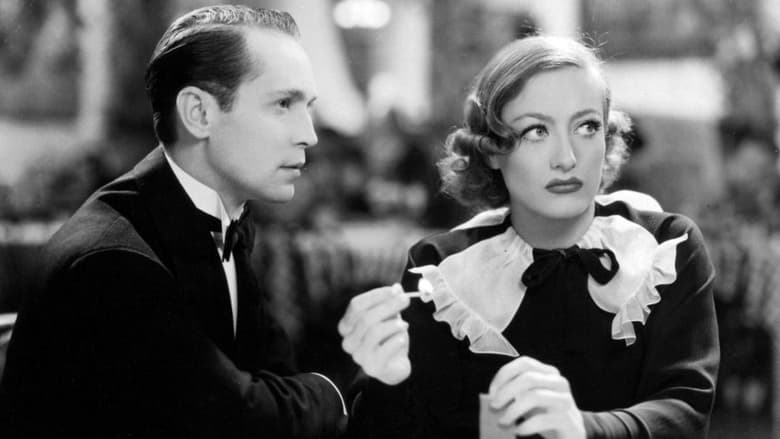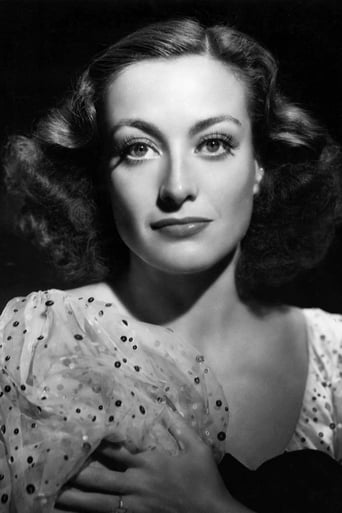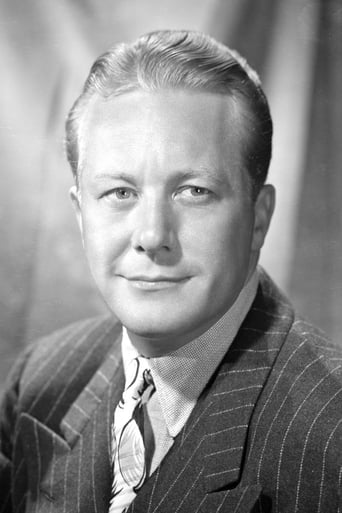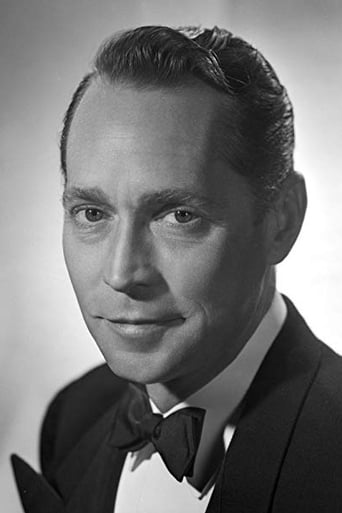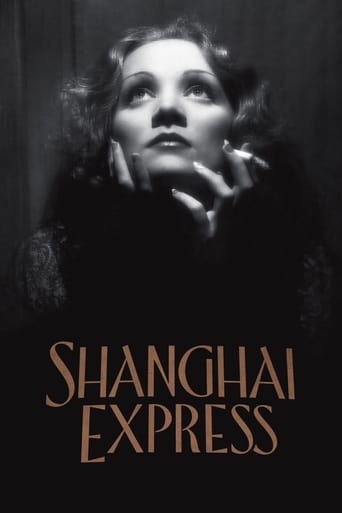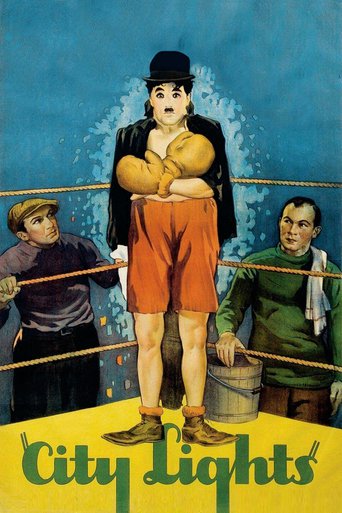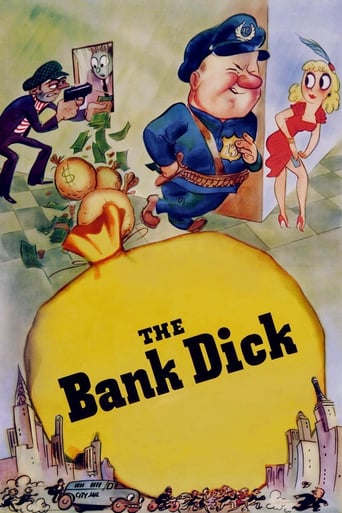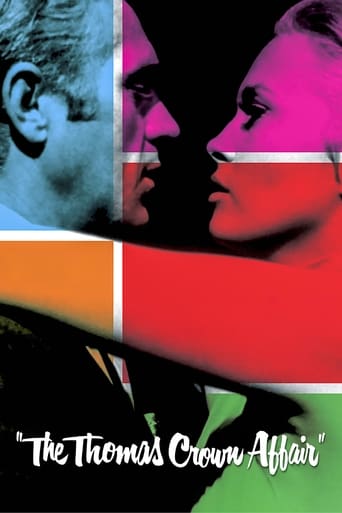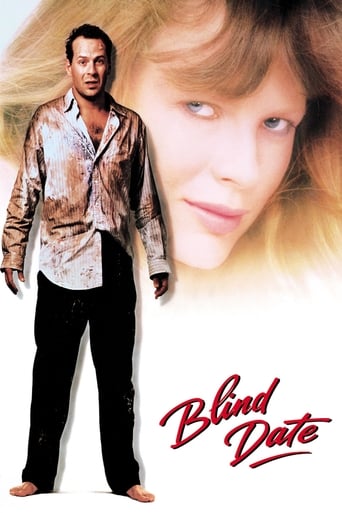Sadie McKee (1934)
A maid has romances with a two-timer, a boozing millionaire and the master of the house.
Watch Trailer
Free Trial Channels
Cast


Similar titles
Reviews
Excellent, a Must See
What a freaking movie. So many twists and turns. Absolutely intense from start to finish.
While it doesn't offer any answers, it both thrills and makes you think.
Blistering performances.
Joan Crawford plays Sadie McKee, a maid in the household of the Alderson family. When Michael Alderson (Franchot Tone) insults her no-good boyfriend Tommy (Gene Raymond), Sadie quits. She runs off to the city with Tommy, presumably to get married, but Tommy abandons her. Instead of finally believing Tommy is a rat, Sadie still blames it all on Michael. Seeing a chance to get back at him and to become wealthy herself, Sadie marries Michael's friend Jack Brennan (Edward Arnold). Jack is an alcoholic and Michael comes to despise Sadie for marrying him, even thinking she's trying to drive him into his grave so she and Tommy can collect his money. But his mind changes when he sees Sadie help Jack overcome his alcoholism. There's a lot more plot to go from here. Sadie will take more twists and turns before the movie is through.On the surface it looks like yet another of Joan's forgettable soapers from the '30s. Franchot Tone's in the cast, as he usually was. But, surprisingly, it's actually better than those films. The thing that makes it better is that it has a different tone to it. It's treated as a serious dramatic film, not a melodramatic soap opera. Even though it deals, as most of Joan's films from this period, with characters of moral complexity I didn't find myself hating everybody. I was pretty frustrated with Joan's character here, mainly because she kept loving dirtbag Raymond despite the movie never showing us one good thing about him. But her performance was sincere enough I didn't find myself hating her even though I didn't like her always. Tone gives a great performance. One of the best of any of his films with Joan. Arnold is very good in an atypical role for him. Gene Raymond is bland as ever but inoffensive. He gets to sing the song "All I Do Is Dream of You " repeatedly in the movie. I'm not a big fan of Raymond's but he sings the song well. Anyway, it's a good movie let down some by a contrived ending and Sadie's fanatical devotion to the undeserving Tommy.
I'd have to describe Sadie McKee as both the typical Joan Crawford vehicle and the typical Franchot Tone vehicle. The two of them who were husband and wife when the film was made are perfectly cast in roles that typified their images in the Thirties.Crawford is the daughter of a cook on the sumptuous palatial Long Island estate where Tone is the young heir and a lawyer by trade. To earn a few extra bucks Crawford occasionally helps mom out serving at formal meals.At one of those meals she hears Tone disparaging her sweetheart Gene Raymond who was caught in a petty theft. Tone makes a big point in saying we can't give people like these help because they're no good. Crawford throws a fit and runs to Raymond.She almost marries Raymond, but he runs out on her for Esther Ralston. In New York working as a nightclub cigarette girl she runs into Edward Arnold who is a millionaire with a severe drinking problem. No doubt caused by drinking a lot of rotgut liquor during recently repealed Prohibition. And wouldn't you know it, Tone is his lawyer.So Sadie has her three men, give you one guess who she winds up with in the end. You'd probably guess right, but let's say it's a character altering experience for all.Sadie McKee is probably a good example of the Joan Crawford shop girl before she became a hardened creature like Crystal Allen in The Women. As for Franchot Tone, MGM just loved casting him as rich men in a tuxedo, probably because he looked so darn good in them. The only way either of them escaped type casting was as they got older they varied their parts due to age. Crawford was ever the film star, even in some of the horror flicks she did in the sixties. Tone went right into television and worked steady right up to his death.Sadie McKee however is a good opportunity to see them both young and at the height of their fame. Also note the Nacio Herb Brown-Arthur Freed ballad All I Do Is Dream Of You comes from Sadie McKee.
This boxoffice hit from 1934 is a joy to behold for its lack of dripping syrup or treacle as is often the case with these female melodramas, even the best of them. Joan Crawford plays a role she basically had a patent on in the late twenties through the thirties. * Note, Joan Crawford when photographed rightly, looks like the most beautiful woman in the world. The role is that of a servant girl who is in love with one of her fellow workers. He gets fired by the family for something they know he did not do, but to make an example of him, still let him go. This obviously gets Joan riled up and she quits to the chagrain of the master's son, Franchot Tone who loves her. They move together, take the hard knocks together and I'll never forget a scene where a guy puts a cigarette into a hardly eaten cream cake: the look on Sadie/Joan's face is priceless. Will Joan keep her man? Will she survive and escape the claws of poverty? We all know what will happen and Joan to her credit gives one of her best and enduring performances. Check it out whenever it is on Turner Classic Movies.
I liked this fine melodrama despite Joan Crawford and Gene Raymond not being among my favorite actors. Crawford's mother (Helen Ware) is a servant in Franchot Tone's household, and she is also a maid, but has to leave after she berates Tone in front of all the dinner guests for bad mouthing Raymond, who was caught stealing. She leaves with Raymond for New York City where they hope to start a new life together, intending to marry the next day. Love, apparently, has no boundaries. They find a cheap rooming house after befriending showgirl Jean Dixon and get a room where she lives. This film was released less than two months before the Production Code was strictly enforced, after which you would never see an unmarried couple sharing the same room. The scene fades to black after they kiss passionately. Of course, while Crawford is looking for a job, Raymond is enticed by singer Esther Ralston to join her act, so he never meets her at the marriage license bureau as planned. Eventually, Crawford meets and marries multi-millionaire Edward Arnold, an alcoholic to end all alcoholics. In a 1948 interview, Arnold said this was his favorite role to that date. I can't fault his acting, but his character was very irritating. Even alcoholics have periods where they are not so pie-eyed they can't walk without staggering. Meanwhile, Tone, who is Arnold's lawyer, thinks Crawford married Arnold for his money and knows she still carries the torch for Raymond, and Tone despises her for it. She admits she didn't love Arnold and it was a marriage of convenience. But when she cures Arnold of his alcoholism, Tone has a newfound respect for her. So when Crawford learns Raymond was dumped by Ralston, and she tells Arnold of her love for Raymond and asks him for a divorce, presumably without a settlement, she asks Tone to help her find Raymond, which he does. He's ill with tuberculosis, so Tone pays to get the best doctors to try to cure him.The film is entertaining despite little of it ringing true. The way Crawford behaved at times, I expected to see a halo over her head, so Crawford fans should love the film. It also helps to know that Crawford and Tone were married in real-life the year after this film was released. There is some pleasure from the music on the soundtrack, including the very popular songs "All I Do is Dream of You" and "After You've Gone," the latter performed in a jazzy version by Candy Candido and Gene Austin. I would have liked more comedy relief, since I didn't think Arnold's actions were particularly funny. The one scene that made me laugh involved two motorcycle cops and a taxi driver, and a tip that Crawford tries to give the cops for bringing the passed-out Arnold home. Otherwise, I never even cracked a smile.


